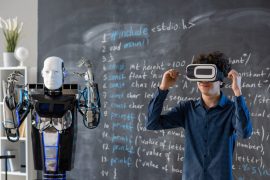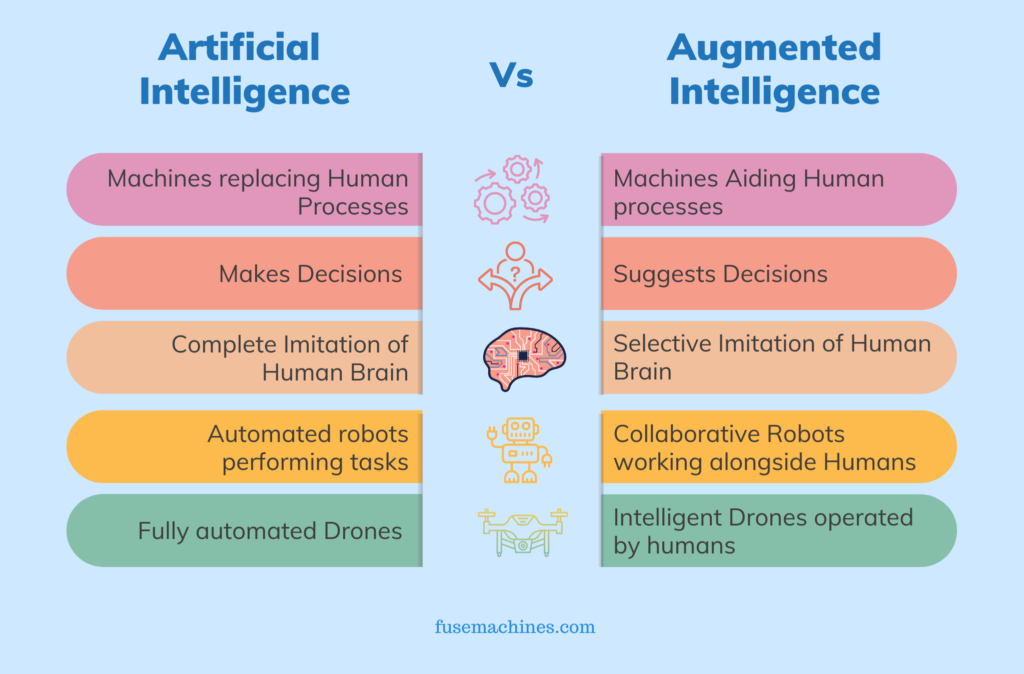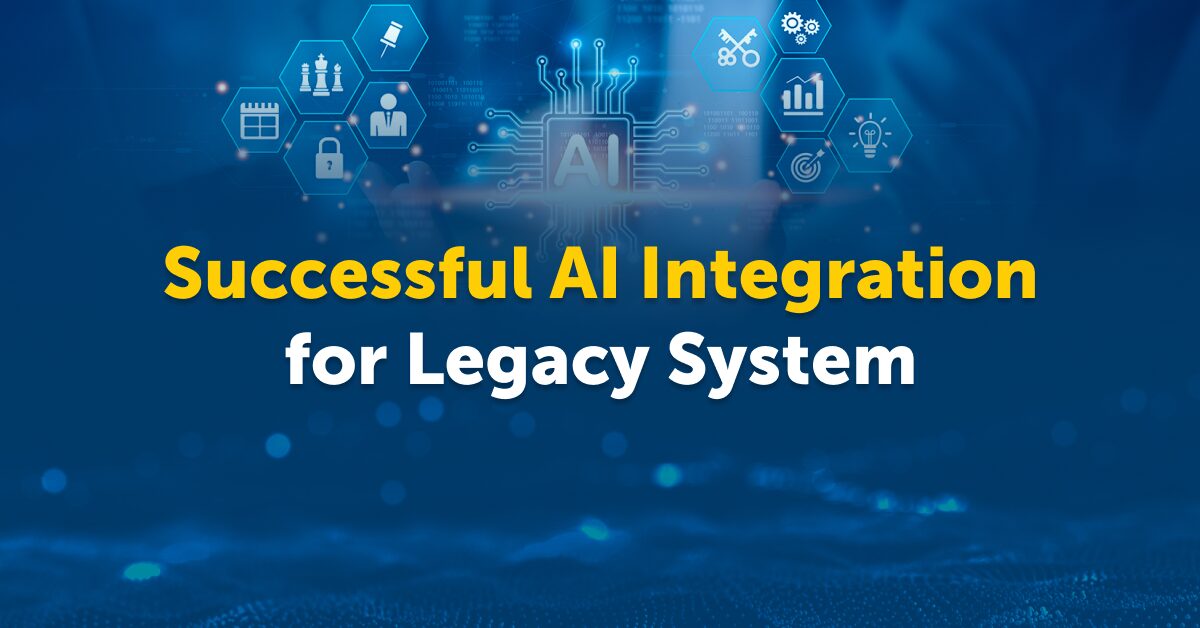Augmented Intelligence Vs Artificial Intelligence, Analyzing The Future of Tech

Augmented Intelligence and Artificial Intelligence (AI) have both enjoyed hype, research, and innovation in the last few years. While Artificial and augmented intelligence share an objective (enhancing everyday operations through the simulation of cognitive behavior), the way they achieve it differs. Augmented intelligence aims to operate with human-centered models, while Artificial intelligence tends to function with little to no human interference.
Although it’s easy to confuse the two, each has unique properties and applications. Let’s go through both.
What is Augmented Intelligence?
Augmented Intelligence is sometimes known as Intelligence Amplification (IA), cognitive augmentation, or enhanced intelligence. Simply put, it’s the use of technology to augment human intelligence. Intelligence amplification was initially designed in response to concerns about how AI could impact human life. It has been successful in building models inspired by human consciousness.
Common Applications
- Engineering Innovation
- Virtual Tutors in Online Education
- Predictive Maintenance
- AR events with data, CGI, and internet devices
What is Artificial Intelligence?
AI is a simulation of human cognition by machines. It studies methods of building intelligent programs that replicate human tasks such as making decisions and learning from experience.
Common Applications
- Virtual Personal Assistants
- Online Customer Support
- Smart Home Devices
- Smart Surveillance
Comparing Augmented Intelligence and AI
AI aims to be better and more efficient than humans at conducting such tasks with the help of data and machine learning. Augmented intelligence aims to enhance human abilities with the help of intelligent machines.
So how does AI compare to augmented Intelligence?
The answer isn’t simple. AI is best at performing repetitive tasks with high accuracy. If you can effectively teach a machine to do a particular task, chances are it will outperform its human counterparts.
Augmented intelligence is ideal when your results require human participation. It takes into consideration creativity and emotional intelligence and tries to support humans with data-driven logic.

Take the smart car. First, a human starts the vehicle and gets on the road. Once on the highway, a human might use autonomous driving features to maintain speed, lane, and distance from other vehicles without intervention. Off the highway, one may use augmented reality features like collision detection, alerts on vehicles coming from behind, or assisted parking to further navigate.
In the above example, one is using AI and augmented intelligence in coordination with human intelligence. Sometimes human intelligence is replaced entirely, while other times it’s enhanced.
Bottom Line: Defining the Future of Tech
AI has helped us perceive and understand the world and do things we couldn’t on our own. Enhanced intelligence will help humans continue to thrive, as machines do the heavy lifting. Both are building the future of technology.
Ready to explore how Fusemachines and AI can help your business? Click Here
Want to learn more about Fusemachines? Click here


